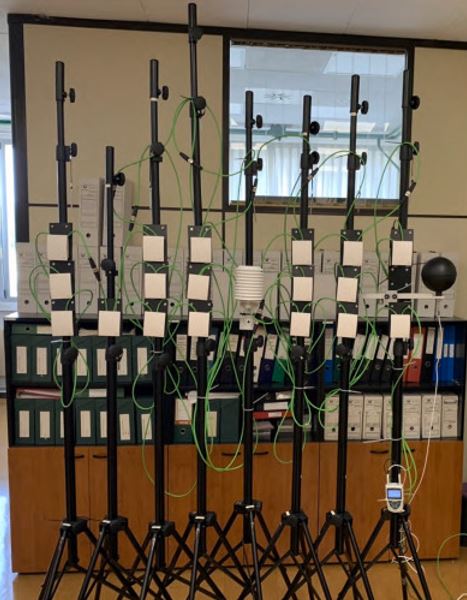The ENEDI research group of the UPV/EHU presents a method with which to characterize both the Global Temperature Uncertainty (UT) and the Spatial Temperature Uncertainty (UT(SP)) considering the different causes of uncertainty that lead to obtaining inaccurate zonal indoor measurements.
https://www.sciencedirect.com/science/article/pii/S0360132322003602?via%3Dihub
| Generally, studies where the zonal indoor air temperature is measured only consider the manufacturers’ sensor accuracy to determine the overall Temperature Uncertainty (UT), without considering other sources of uncertainties that affect the indoor air temperature measurement of a thermal zone within a building. Thus, in this research, the definition and estimation method of the overall Temperature Uncertainty has been developed, together with a decoupling method to obtain the Temperature’s Spatial Uncertainty (UT(SP)), in which all causes of uncertainty regarding the temperature measurement are included, except the Temperature Sensor Uncertainty (UT(S)). Using the measurements of the indoor air temperature from sensors installed randomly in four offices of an in-use tertiary building, the developed statistical analysis has been applied to estimate and decouple the overall indoor air Temperature Uncertainty of each monitored office. Each studied thermal zone represents a different office typology composed of divisions with different volumes that allow their classification.
The first study carried out was the estimation of the experimental accuracy by estimating the Temperature Sensor Uncertainty, including both the sensor uncertainty plus the monitoring system uncertainty in this value. This first study has allowed us to discover the importance of the estimation of the Temperature Sensor Uncertainty when installing a monitoring system, inasmuch as the experimental accuracy could be different from the manufacturer’s accuracy, as reflected in the results of this research. Secondly, based on the developed statistical method, for each of the monitored thermal zones, the overall zonal indoor air Temperature Uncertainty is estimated in order to finally decouple it into the Temperature Sensor Uncertainty and Temperature’s Spatial Uncertainty. The decoupling results show that, depending on the office typology, the percentage weight of the Temperature Sensor Uncertainty only represents between 5% and 11% of the overall zonal indoor air Temperature Uncertainty. |

